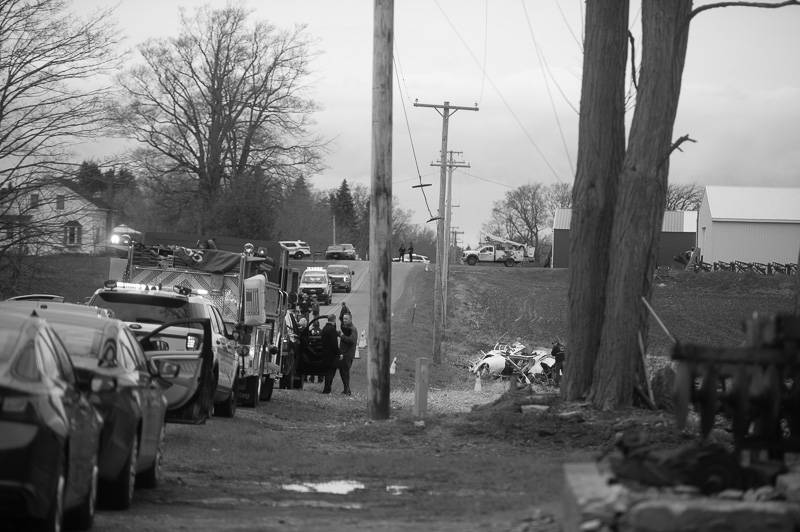
Investigators with the National Transportation Safety Board Safety Board found no mechanical issues with a Bell helicopter operated by Mercy Flight that crashed during training in Elba on April 26, 2022.
The available evidence suggests, according to a final NTSB report, that an instructor did not provide adequate information to the pilot of the craft to recover from a maneuver, causing the Bell 429 to break apart mid-air.
The actions the pilot did take likely caused the main rotor blades to contact the tail boom, which caused the tail boom to separate from the body of the helicopter.
The pilot and trainer were working on dealing with a "vortex ring state," or VRS, which is a dangerous airflow condition that a pilot might encounter during flight.
Pilot James E. Sauer, 60, of Churchville, was being trained that day by Stewart M. Dietrick, 60, of Prosper, Texas. Sauer was the second pilot of the day to embark on a training mission with Dietrick.
The first pilot of the day told investigators he didn't think the VRS training went well.
"While in VRS, the pilot stated that he didn’t know why they were going so deep into VRS and that the instructor was just sitting there, 'hands on his lap,'" the report states. "So, the pilot, feeling uncomfortable at that point, had to exit this very high descent rate on his own rather than waiting for further guidance from the instructor pilot."
The report states that flight recorder data indicates that prior to the crash near Norton Road in Elba, there were multiple abrupt control inputs. That data, combined with contact evidence found on the main rotor blades and tail boom after the accident, indicates the rotor blades hit the tail boom during the flight just prior to the crash.
"The parametric data and physical evidence observed during a postaccident examination of the wreckage revealed no evidence of any mechanical malfunctions or failures of the helicopter that would have precluded recovery from VRS," the report states.
To read the full report (PDF) click here.
